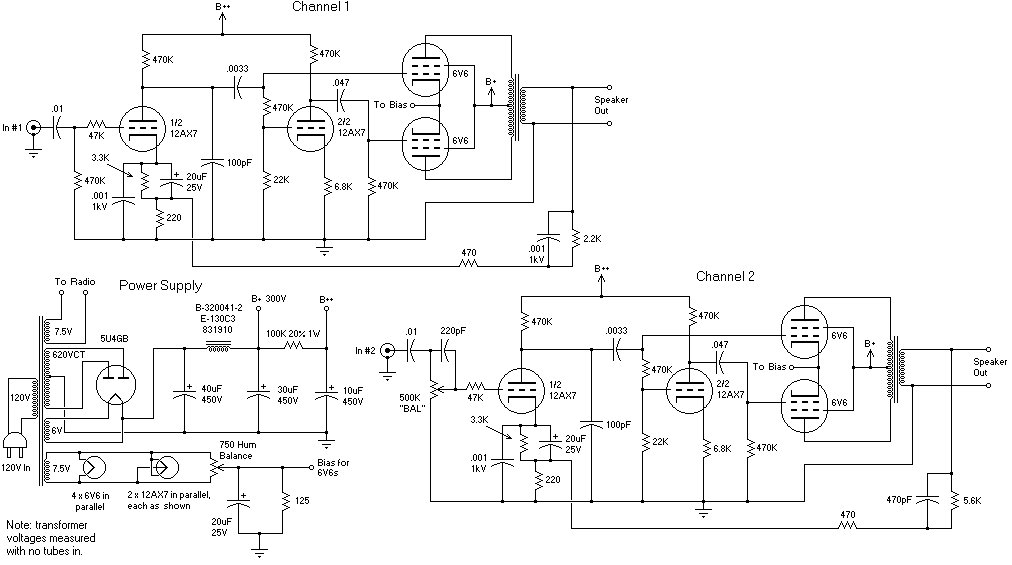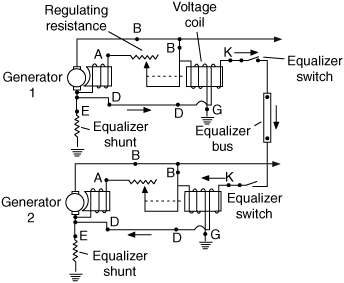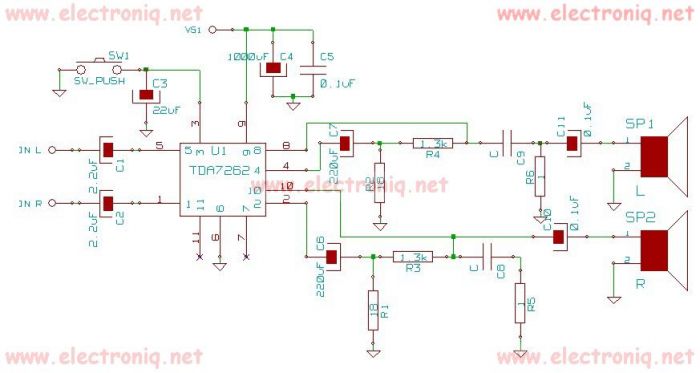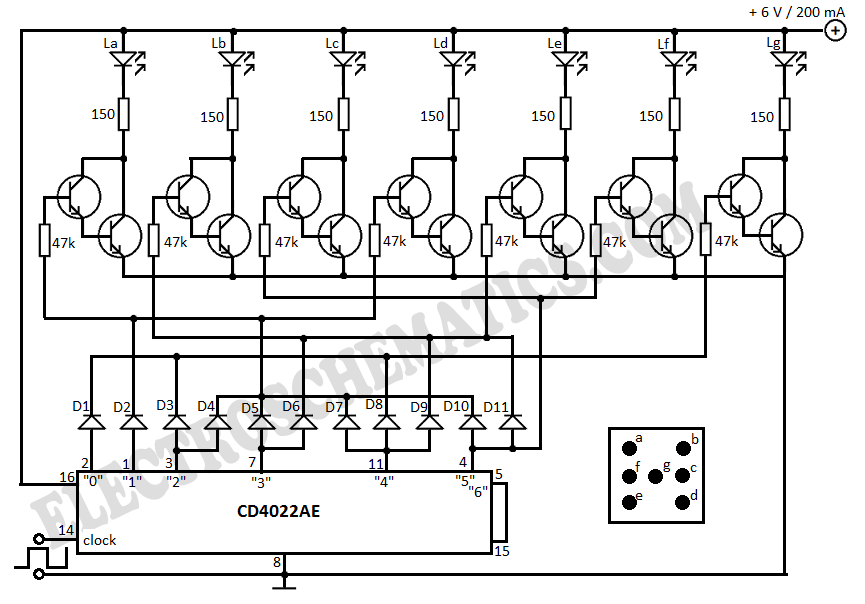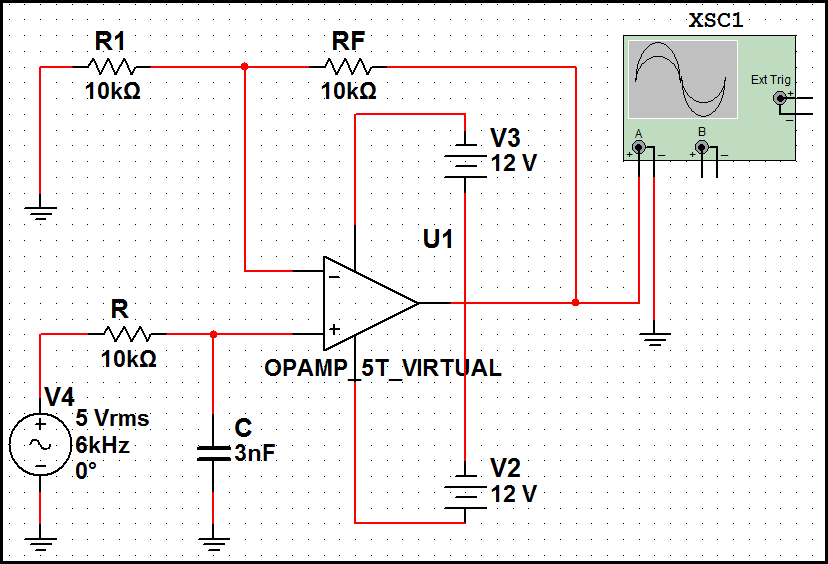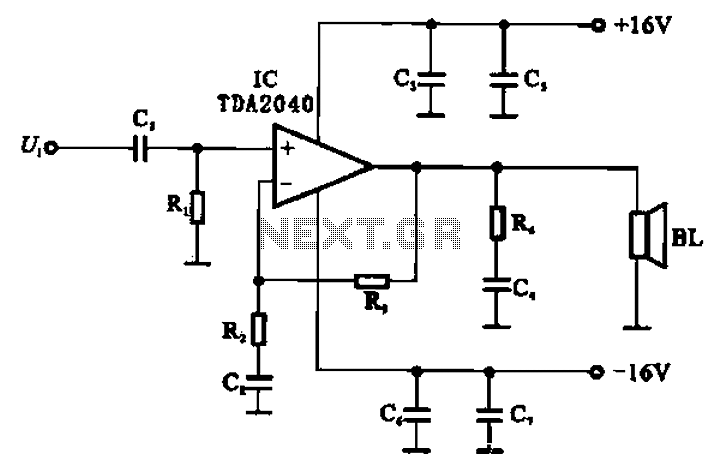
Intermittent start and stop cycle control circuit of the four
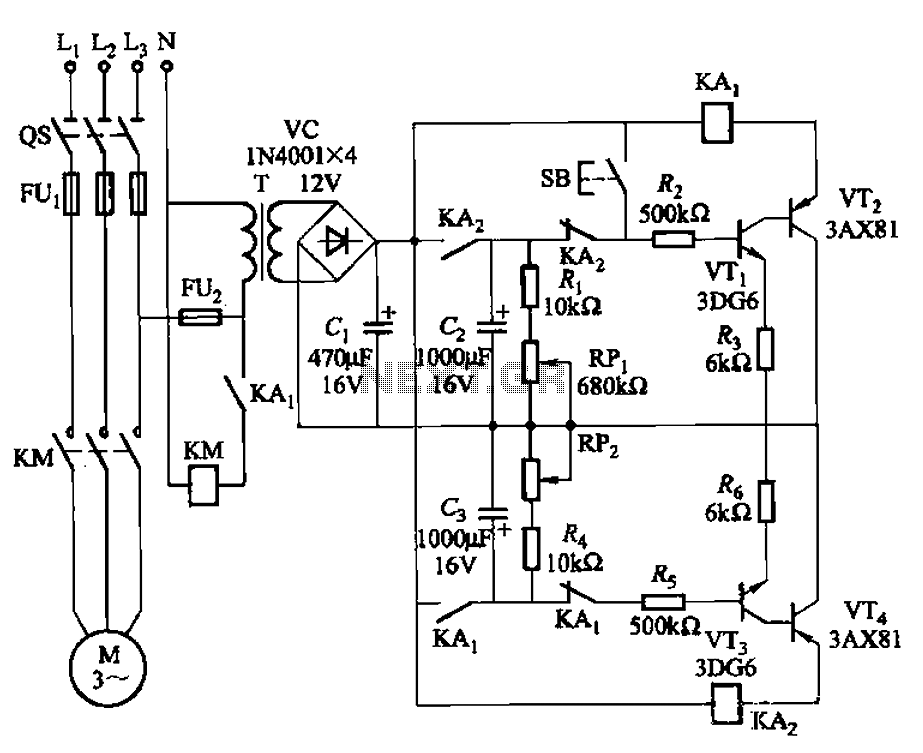
The circuit illustrated in Figure 3-79 consists of two delay circuits. The RPi adjustment potentiometer and RP2 can be modified to control the duration of the motor operation, allowing for arbitrary adjustments within a specified time frame.
The circuit comprises two delay stages that serve to control the operation of a motor. The first delay circuit utilizes an RPi adjustment potentiometer, which allows for fine-tuning of the delay period. This component is crucial for setting the initial timing parameters that dictate how long the motor remains active before stopping. The second delay circuit, represented by RP2, further enhances the control over the motor's running time, providing additional flexibility in timing adjustments.
In practical applications, the use of potentiometers in delay circuits allows for user-friendly adjustments. By rotating the potentiometer knob, the resistance changes, thereby altering the time constant of the circuit. This results in a variable delay that can be tailored to meet the specific requirements of the motor operation. The timing can be adjusted within a defined range, making it suitable for various applications where precise motor control is necessary.
The integration of these delay circuits ensures that the motor can be activated or deactivated based on the desired timing, enhancing efficiency and functionality in automated systems. Additionally, the circuit design may include other components such as capacitors and transistors, which work in conjunction with the delay circuits to stabilize the operation and enhance the performance of the motor control system. Overall, the schematic provides a robust solution for controlling motor operations with adjustable timing capabilities. Circuit shown in Figure 3-79. It consists of two delay circuits, respectively. RPi adjustment potentiometer and RP2, respectively, can be changed and stop the motor running the length of time (arbitrarily changed within th).
The circuit comprises two delay stages that serve to control the operation of a motor. The first delay circuit utilizes an RPi adjustment potentiometer, which allows for fine-tuning of the delay period. This component is crucial for setting the initial timing parameters that dictate how long the motor remains active before stopping. The second delay circuit, represented by RP2, further enhances the control over the motor's running time, providing additional flexibility in timing adjustments.
In practical applications, the use of potentiometers in delay circuits allows for user-friendly adjustments. By rotating the potentiometer knob, the resistance changes, thereby altering the time constant of the circuit. This results in a variable delay that can be tailored to meet the specific requirements of the motor operation. The timing can be adjusted within a defined range, making it suitable for various applications where precise motor control is necessary.
The integration of these delay circuits ensures that the motor can be activated or deactivated based on the desired timing, enhancing efficiency and functionality in automated systems. Additionally, the circuit design may include other components such as capacitors and transistors, which work in conjunction with the delay circuits to stabilize the operation and enhance the performance of the motor control system. Overall, the schematic provides a robust solution for controlling motor operations with adjustable timing capabilities. Circuit shown in Figure 3-79. It consists of two delay circuits, respectively. RPi adjustment potentiometer and RP2, respectively, can be changed and stop the motor running the length of time (arbitrarily changed within th).
